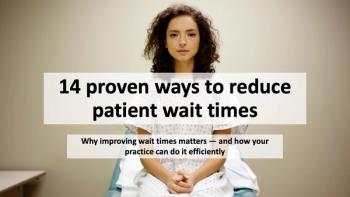
Putting Dignity in Death
Internist Carol Kelly recalls what she did when there was supposedly “nothing to do” for her ALS patient.
It was 1980. I was a junior resident at Duke, when George* came into the medical clinic for his first visit. “My arm’s been shaking for a good long while,” he said. He was a distinguished black man in his 80’s, tall but a little stooped. George was proud to say he’d never been in the hospital and never would be. He was accompanied by a son who said that Dad had never been much for doctors, but the family had become concerned when he could no longer work in his garden.
His initial neurological exam included most of the findings listed in my textbook under neurodegenerative disease: fasciculations, clonus, multiple muscle groups with weakness and wasting. My preliminary diagnosis was ALS. My clinic attending agreed with this diagnosis, and a week later the neurology clinic confirmed it. The neurologist sent him back to me and said he could be followed in medical clinic because “there was nothing to do.”
George and his family were calm and accepting when I broke the news. In the absence of anything better to do, I asked that he come back in a month.
Each month for the next 14 months, George came to my clinic with a family member and we talked. I am sure I examined him and documented his declining physical functions but I don’t remember much except that each month he was thinner and weaker. George never asked any questions about the course of his disease. He was a lifelong baseball fan, so he probably knew a lot about ALS from the news reports about Lou Gehrig, who was in his heyday as a ballplayer when George was himself a young man. At each appointment, it seemed he was accompanied by a different family member. At one point I learned that he’d had 15 children, though not all were living, and scores of grandchildren.
Just before Christmas, George made his last visit to my clinic. He could barely make a sound, propped up in his wheelchair. His son pulled me aside and asked if I could help the family honor George’s wish to remain out of the hospital. Although the family would care for him at home until the end, he was really concerned that when Dad died he would have to go to the hospital to be pronounced dead. Could I do something about that? Spontaneously I gave him my home phone number and told them if it was at night and I was not at the hospital to call me at home and I would come.
Four days after Christmas, I got a phone call in the middle of the night. George had died, would I come? A family member would meet me at the parking lot of a local church to guide me into the neighborhood. When I arrived at their tiny home, it was packed with people. The room parted to allow me into the bedroom where George lay propped on pillows. I had never seen death outside the hospital and in my haste, I had forgotten my stethoscope. How would I be sure he was dead?
The moment I saw him, though, there was no doubt. While I tried to figure out whom to call to arrange to sign his death certificate, his daughter told me the story of their holiday. Christmas Day they had lifted him into his wheelchair one last time to sit among the grandchildren as they opened their Christmas presents, then they laid him in bed and he quietly faded away. Everyone seemed anxious to tell me a story of George. Their preacher arrived and I awkwardly joined their circle of prayer. The final arrival was the undertaker. They wrapped George in a shroud that bore their slogan: “We put dignity in death.” That image and those words were imprinted in my memory. When I got home, I wrote down George’s story because I didn’t want to forget.
There have been many patients since George and I’ve learned many things from them. Practicing internal medicine and geriatrics, most of my patients have chronic, progressive diseases. Despite advances in medical technology and an ever-expanding pharmacopeia, there comes a time when there is “nothing to do” to prevent death from coming.
Yet before the rise of palliative care programs, George taught me that there is much to do when the underlying disease is irreversible. Those monthly visits with George taught me that simply being there for patients and families is strong medicine. My later experiences have given me tools and skills to help manage pain and other symptoms often associated with dying. I didn’t possess those when I cared for George. Fortunately, I don’t believe George’s suffering was exacerbated by my inexperience. But I learned an invaluable lesson in a small home in North Carolina. A good doctor helps put dignity in death.
* Name has been changed to protect anonymity.
Carol B. Kelly, MD, is an internist and geriatrician in the Bronx, N.Y., at Comprehensive Care Management, a national PACE program which strives to keep frail elderly in the community.
This article originally appeared in the October 2009 issue of Physicians Practice.
Newsletter
Optimize your practice with the Physicians Practice newsletter, offering management pearls, leadership tips, and business strategies tailored for practice administrators and physicians of any specialty.








